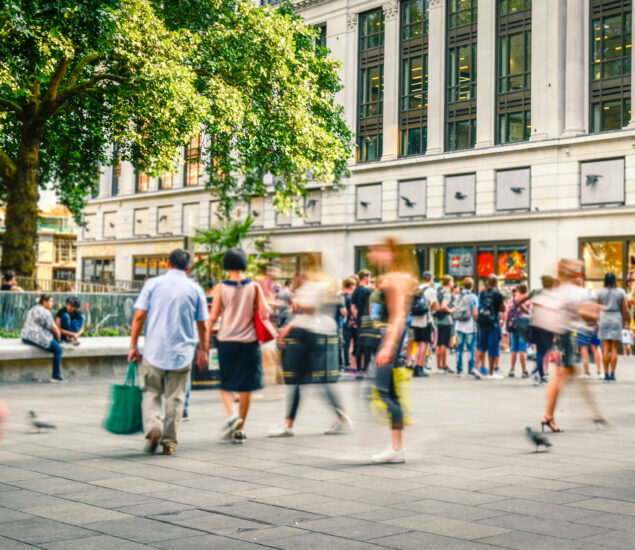Last week, we spoke to Edna about her PhD thesis, City of Fear, where she analyses the link between feelings of insecurity, daily practices, and public spaces in a context of chronic violence.
Edna Pezard Ramirez is an award-winning urban analyst, consultant, researcher, and author, focused on transforming public spaces to make them safer and more humane. With a background in urban affairs, Edna holds a PhD from the Université Paris Cité on feelings of insecurity in the public sphere, with a special focus on vulnerable populations. Edna is also the founder of CITY CITÉ CIUDAD and she has collaborated with European and American municipalities, NGOs, and researchers. Her work has been published and shared on platforms such as the Fondazione Feltrinelli, Oxford Urbanists, the Journal of Public Spaces, the International CPTED Association, and Reflexions Immobilière’s.
City of Fear
Last week, we spoke to Edna about her PhD thesis, City of Fear, where she analyses the link between feelings of insecurity, daily practices, and public spaces in a context of chronic violence. With urban violence in Latin American increasing exponentially since the 1990s, Edna focuses on Monterrey Mexico, her hometown. Edna explains that structural violence, such as socio-spatial inequalities have gone unattended for decades and, on top of this, citizens have to rely on individualistic solutions in the face of ineffective public action. In such an environment, feelings of insecurity and the daily life are often over-looked since there are larger “more real” issues at hand. Nevertheless, these elements affect how city dwellers perceive and use public spaces. Edna explores the importance of addressing feelings of insecurity using a holistic approach – an approach that considers the experiences of vulnerable populations such as women, children, and the elderly.
A Holistic Approach to Insecurity
The notion of urban violence and crime are often used interchangeably. However, Edna argues that this is not necessarily an equivalency. I.e., not all crime is violent and not every violent act is treated as a crime. On top of this, there is not a direct or intuitive relationship between perception and crime. That is to say, a low crime rate is not an indicator that people feel safe, especially if those people are part of a vulnerable population. Perception of safety is based on more than just crime rates. “Policy makers, practitioners, and researchers are baffled when observing that even in spaces with low crime rates, city dwellers express heightened feelings of insecurity. Conversely, individuals in spaces with high crime rates are apparently not as worried.” (pg. 15). Edna points out that feelings of insecurity – which are harder to measure than crime – often translate into landscape and into practices of everyday life. In an urban context, feelings of insecurity are elevated due to a presence of crime, violence and terrorist attacks around the world. When a society is built unequally, the problem of urban violence becomes more complex. There is an evident gap in the body of knowledge related to feelings of insecurity and daily practices. Urban violence is a problem that has a significant impact on everyday life. Edna suggests that solutions at a city level are becoming more relevant. Public space has, thus, become an object of increasing dispute but can also direct us towards potential solutions moving forward. As Edna puts it, “spatial transformations of public spaces have attracted a lot of attention from city dwellers, city makers, and researchers. We must consider that public space is much more than cobblestones, fountains, and benches. Public space is also the processes and the relationships that emerge in a spatial-temporal context that changes, it has social, political, and cultural significations.”
Bridging the Gaps with CITY CITÉ CIUDAD
Born out of her research on insecurity and public space, Edna has founded an international consulting agency based in her hometown of Orléans, specialising in public space analysis. CITY CITÉ CIUDAD’s mission is to help a variety of urban actors — urban developers, design agencies, and townships, for example — make public spaces safe, inclusive, and humane. Recognising that security extends past the physical element of installing gates, barriers, and cameras, CITY CITÉ CIUDAD focuses on the needs of vulnerable populations and creating spaces that promote social cohesion. The agency’s activities integrate users’ input at different stages throughout the participatory process. Edna explains that “participatory methods are complex, but when done right — through a lens of intersectionality and inclusion — they enrich deeply our technical expertise as city makers and can help us co-produce longer-lasting solutions towards safer environments for all. Public spaces that work for the most vulnerable among us — those who are affected first and most by violence in their everyday lives — work for everyone.” CITY CITÉ CIUDAD has received the PEPITE Ile de France Award and the Fondation Palladio Award for its innovative approaches.
The Power of Mixed Mediums
If you are familiar with Edna’s research, you might also be familiar with the variety of mediums she uses to connect with a wider audience. Academia can often be a tough field for many to navigate. With this in mind, Edna has made her research more approachable by creating a trailer to illuminate her exploration of insecurity in Monterrey. Retelling her experience making the trailer, she explains that she “started by focusing on feelings of insecurity. How did the participants of my research project feel? How do I want the audience to feel? What are the elements that I explored in my thesis?” Edna has also made use of art and photo exhibitions to communicate her research to a wider audience.
“Art is a language that transcends social and cultural barriers. In my work, it has been an indispensable tool for communication. On the one hand, as part of participatory methodologies it helps city dwellers — particularly those who are in vulnerable positions — communicate issues of violence and security that would otherwise remain unseen and unspoken, and therefore undiagnosed and unattended. And on the other hand, it allows me to communicate scientific research in a different way. Video, photography, and installations related to my research have started conversations with people who are neither scientists nor urbanists, but that have fascinating insights on the topics illustrated.”






